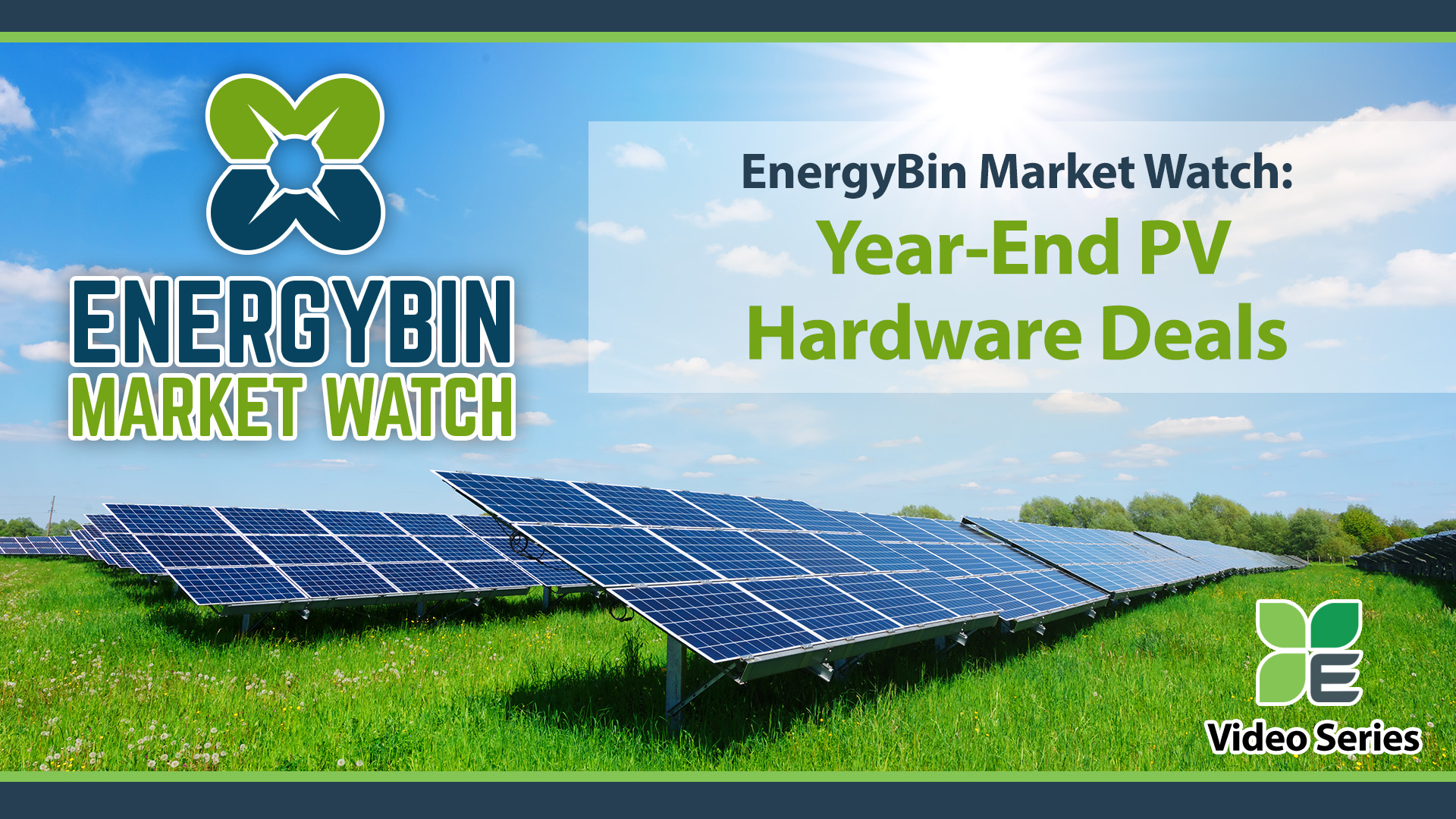The following article is the transcript from a conversation with Melissa Schmid, marketing communication manager, and Rob Van Demmeltraadt, sales manager, at EnergyBin, who share insights about year-end PV hardware deals from site activity on the secondary solar market exchange.
Click on the video to view the interview.
Hello. Welcome to this edition of Market Watch brought to you by EnergyBin, the leading B2B exchange for solar equipment resale.
I’m Melissa Schmid, the marketing communication manager at EnergyBin, and I’m joined by my colleague, Rob Van Demmeltraadt, who is an expert at connecting wholesale buyers and sellers of solar hardware. Thanks for being here, Rob.
Today, we’re discussing year-end PV hardware deals within the secondary market, and specifically activity we’re observing on the EnergyBin exchange.
Demand for solar is booming, and we’re beginning to see an ease from heightened costs due to inflation. Across the global solar industry, polysilicon and wafer costs are on a downward trend, and freight costs are now approaching pre-pandemic levels.
Supply is ramping up as well. Supply chain bottlenecks continue to be resolved, and factories are increasing capacity to address growing demand.
This is all good news for industry players and customers. A competitive marketplace leads to competitive prices as well as a robust secondary market where resellers list quality hardware at attractive prices.
Rob, every year, we see sellers on the EnergyBin exchange listing discount deals in quarter 4 (Q4).
1. What’s driving this trend?
Rob: We certainly see this trend each and every year. There are a variety of reasons that depend on a company’s business model. We see organizations – whether they are distributors or installers – who are looking to clear off their shelves. Installers have excess to resell. Or, distributors are making room for next year’s equipment. They want to move what’s in their warehouses now. They don’t want to carry that inventory over into 2023.
We also see companies looking to ramp up for next year. They now have new equipment coming in. Additionally, because of supply chain delays the industry has been experiencing, they’ve got hardware coming in that they ordered months and months ago. Therefore, we’re seeing more liquidations and more opportunities for buyers.
On top of that, the trend to repower is playing a role as well. Whether utility, commercial, or residential, companies and asset owners are looking to upgrade their technology. They have the opportunity to buy new technology at good deals in this quarter as well.
Melissa: What I’m hearing from you, Rob, is that the urgency to unload this solar equipment is leading to deals that you may not be able to obtain at other times of the year.
2. Do these deals tend to spill over into Q1 of the next year?
Rob: They may; it all depends on what’s still left. We’ve just experienced Black Friday and Cyber Monday on the retail level, and you’re seeing the same kind of “get them while supplies last” deals across the board on the wholesale level. Organizations are willing to discount inventory, so they can move this gear out of their warehouses to make room for new inventory. Or, maybe they want to mitigate the loss of older inventory, so they can reapply those monies to future needs.
Melissa: Ok, thank you for that clarification. Let’s get into some of these examples.
3. What are some specific deals you’ve seen on the exchange lately?
Rob: These are active broadcasts from organizations who are looking to buy or sell PV hardware today. 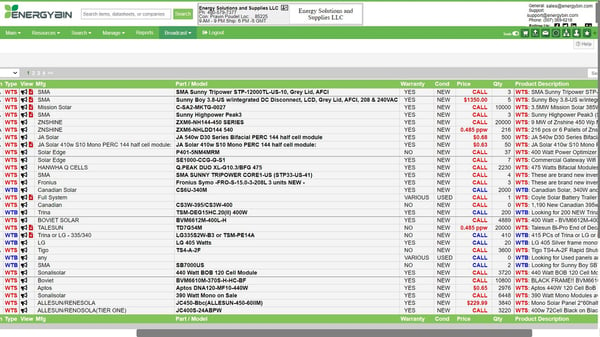
The red WTS stands for Want-to-Sell. I can look down this list, and here’s a good example. Here are Talesun bifacial modules for sale by US Solar Supplier. He’s asking for $0.485/watt, but keep in mind that every price you see on EnergyBin is negotiable. Sellers may be willing to sell at a lower price. The listed price is their starting price. It’s similar to used car listings. They’re listing at a higher price often expecting to settle at a lower price. 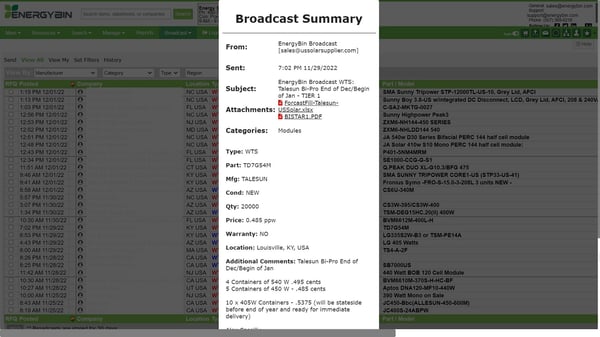
To see details of this broadcast, I can click here on the bullhorn, and I can see exactly what Alex Cassilly has for sale. He has four containers of 540-watt modules, five containers of 450s, and 10 containers of 405s. These modules are stateside before the end of the year and ready for immediate delivery. What he’s doing is he’s got this inventory, and he wants to move it quickly.
That’s one good example. As you can see, there are a variety of opportunities on the exchange, including some large quantities – megawatts worth of equipment that companies are looking to move quickly. So, the opportunities are there for you to plan ahead if you’re a buyer looking for a good deal, or if you’re a seller looking to move equipment that you don’t want to carry over into 2023.
Melissa: Give us a few examples of sellers’ success on the exchange.
4. How quickly do these lots sell?
Rob: One particular distributor, a large company most folks know, recently discovered some older inverters in their warehouse. These inverters were three or four generations old. The distributor believed that these were going to be something to recycle, throw away, give away, or even pay someone else to take away. Before they cut their losses, they posted the inventory on EnergyBin, and within five minutes, they received two inquiries and were able to sell the entire lot. So, they ended up making money on equipment they thought was a lost cause.
Another good example is from a recycling company. The organization had 2,000 decommissioned SunPower 327-watt modules. They posted the lot on EnergyBin, and they received five different bids from interested buyers all within a day or two. They were able to sell the lot quickly.
The challenge we have on our end is we’re connection experts. What we do is we help you find a partner for what you’re looking to source or sell.
Melissa: Those are excellent success stories of how companies are reselling their excess and clearance inventory on EnergyBin.
5. What tips do you have for solar companies who may have excess – both new and used PV hardware – to resell?
Rob: The key is you have to let people know, meaning you can’t catch fish unless you throw your line in the water.
You have to let the EnergyBin membership know what you’re looking to source or sell. The best way to do so is by posting broadcasts. We suggest you include as many details as possible, such as the wattage, manufacturer, color, cell type, etc. If you have photo images or datasheets, attach them to your broadcast. The more information you provide, the better we can represent you when we’re talking to other members. Plus, the more quality information you provide, the easier it is for others to respond to your broadcast.
From a used equipment perspective, not only is it important to include those details, but also information on the product’s functionality and testing results is necessary as well. Buyers will ask for this information. So, if you have documentation proving the goods are still operational, that will help you move it even faster. Otherwise, you’ll need to have someone test them for you.
Once you post your broadcast, give us a call. Anyone on my team is available to help you by identifying targets [prospective buyers] who may be a good fit for you. We’re the guys who sit in the middle, and we understand our members’ needs and competencies. So, we want help you accelerate your selling process.
Melissa:
6. What are some resources for solar companies to determine the resale value of their excess hardware?
Rob: That’s a hard question, as there’s no Kelly Blue Book guide when it comes to used solar panels. In my opinion, whether the equipment is new or used, the resale value is what someone is willing to pay for it.
Most companies have a target price in their mind. We encourage you to post your broadcast with a price and see what response you receive. You can always re-post at a lower price if it doesn’t sell at your first price.
There are some resources that are available. I know you, Melissa, recently published an article about PV hardware and repowering projects, which discusses buying new equipment and reselling the old.
You’re also working on the 2022 PV Module Price Index, correct?
Melissa: Yes, the PV Module Price Index report is based on site activity of crystalline-silicon modules that are posted for resale on EnergyBin. These are both new and used modules. Last year’s report analyzed over two million solar panels that were posted for resale on the EnergyBin exchange. Look for the 2022 report to be released in late January.
Many of our articles and webinars on the EnergyBin Resources portal are done in collaboration with industry experts who share their industry knowledge and expertise to help all of you to succeed in buying and selling wholesale solar equipment. 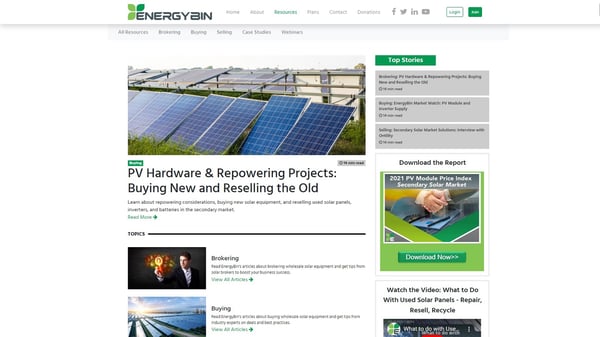
The article Rob mentioned – PV Hardware and Repowering Projects – was just published today. Thank you to R3 Tech and Meraki Solar, two EnergyBin members who participated in this article and sharing their knowledge with all of us.
7. How can you and your team help solar companies and asset owners with the resale process?
Rob: The key for us is to seek to understand your organization and business model. We want to understand what your needs are and what you’re looking to achieve, so we can help you be more effective on the EnergyBin platform.
My goal is to help you find the right partner. That’s so critical because some of the organizations we work with have multiple divisions. We have members who are project managers and looking to buy new. We have warehouse managers who deal with all the excess. We have operations and maintenance personnel who are looking for replacement parts, and so on. Understanding your business model and your specific role within your organization is crucial to helping you get the most out of your membership experience.
Melissa: Wrapping it up, I want to thank you, Rob, for your insights and keeping us up-to-date with secondary market trends.
For our viewers, if you’d like to chat one-on-one with Rob about your solar hardware buy / sell needs, reach out to us at EnergyBin.com.
Also, subscribe to our YouTube channel to get more tips for buying and selling wholesale solar equipment.
From the entire EnergyBin team, we wish you success in your work to advance solar energy. Thank you for all you do, and thanks for watching.
More Resources
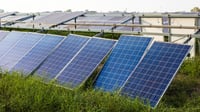 PV Hardware & Repowering Projects: Buying New and Reselling the Old
PV Hardware & Repowering Projects: Buying New and Reselling the Old
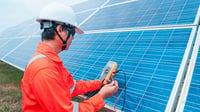 How to Inspect and Test Used Solar Panels for Resale
How to Inspect and Test Used Solar Panels for Resale
